
San Carlos de Bariloche: Argentina's Alpine Wonderland
Discover the alpine charm of San Carlos de Bariloche, a city nestled in the Andes, offering stunning landscapes, adventurous activities, and a rich cultural experience.
Nestled in the foothills of the Andes, San Carlos de Bariloche is a charming city that will captivate you with its stunning natural beauty and rich cultural heritage. Known for its Swiss-like architecture and beautiful lakes, Bariloche offers a unique blend of outdoor adventure and cozy alpine ambiance. One of the city's main attractions is the Nahuel Huapi National Park, which surrounds Bariloche. This vast park offers numerous hiking trails, crystal-clear lakes, and snow-capped mountains. Whether you're an avid hiker, a passionate skier, or just someone who loves scenic views, you'll find plenty to enjoy here. Bariloche is also famous for its chocolate. The city boasts numerous chocolate shops where you can sample and buy some of the finest chocolates in Argentina. Don't miss the chance to stroll down Mitre Street, the main shopping avenue, where you can indulge in a variety of sweet treats. For those interested in history and culture, the Museum of Patagonia offers fascinating insights into the region's past, including its indigenous cultures and wildlife. Additionally, the city hosts various festivals throughout the year, celebrating everything from music to cuisine. Whether you're looking to explore the great outdoors or immerse yourself in local culture, San Carlos de Bariloche has something for everyone.
Local tips in San Carlos de Bariloche
- Visit during the shoulder seasons of spring (October-November) or fall (March-April) to avoid the crowds and still enjoy great weather.
- Rent a car if you plan to explore the surrounding national parks and scenic routes for more flexibility and convenience.
- Try the local trout dishes, a specialty in Bariloche's restaurants, for an authentic taste of the region.
- Pack layers and be prepared for changing weather, especially if you plan to hike or ski.
- Book accommodation well in advance if visiting during peak seasons like summer and winter holidays.
Neighbourhoods in San Carlos de Bariloche
San Carlos de Bariloche: Argentina's Alpine Wonderland
Nestled in the foothills of the Andes, San Carlos de Bariloche is a charming city that will captivate you with its stunning natural beauty and rich cultural heritage. Known for its Swiss-like architecture and beautiful lakes, Bariloche offers a unique blend of outdoor adventure and cozy alpine ambiance. One of the city's main attractions is the Nahuel Huapi National Park, which surrounds Bariloche. This vast park offers numerous hiking trails, crystal-clear lakes, and snow-capped mountains. Whether you're an avid hiker, a passionate skier, or just someone who loves scenic views, you'll find plenty to enjoy here. Bariloche is also famous for its chocolate. The city boasts numerous chocolate shops where you can sample and buy some of the finest chocolates in Argentina. Don't miss the chance to stroll down Mitre Street, the main shopping avenue, where you can indulge in a variety of sweet treats. For those interested in history and culture, the Museum of Patagonia offers fascinating insights into the region's past, including its indigenous cultures and wildlife. Additionally, the city hosts various festivals throughout the year, celebrating everything from music to cuisine. Whether you're looking to explore the great outdoors or immerse yourself in local culture, San Carlos de Bariloche has something for everyone.
When is the best time to go to San Carlos de Bariloche?
Iconic landmarks you can’t miss
Parque Nacional Nahuel Huapi
Explore the stunning landscapes and diverse wildlife of Parque Nacional Nahuel Huapi, a national park in Argentine Patagonia, perfect for outdoor enthusiasts.

Confitería del Cerro Campanario
Discover breathtaking views and delicious Argentine treats at Confitería del Cerro Campanario, a must-see café in the stunning landscapes of San Carlos de Bariloche.

Puerto Pañuelo
Explore the breathtaking marina of Puerto Pañuelo, your gateway to adventure in Argentina's stunning Nahuel Huapi National Park.

Punto Panorámico - Circuito Chico
Experience the stunning vistas of Lago Nahuel Huapi and the Andes Mountains at Punto Panorámico, a top observation deck in San Carlos de Bariloche.

Llao Llao Hotel
Experience the ultimate luxury in Patagonia at Llao Llao Hotel, where breathtaking landscapes meet exceptional service and rich cultural heritage.
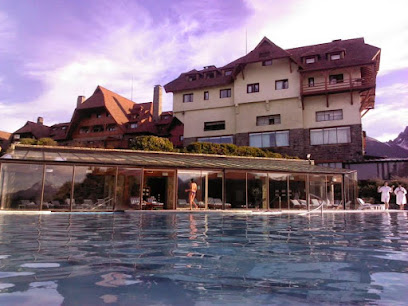
Centro Cívico Bariloche
Explore the architectural beauty and cultural vibrancy of Centro Cívico Bariloche, the heart of San Carlos de Bariloche, surrounded by stunning landscapes.
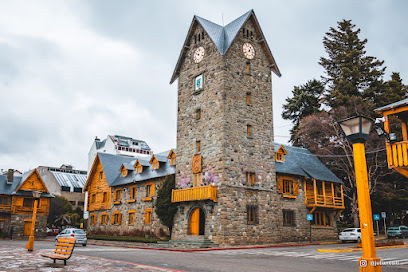
Cathedral Our Lady of Nahuel Huapi
Explore the stunning beauty and rich history of Cathedral Our Lady of Nahuel Huapi, a must-see architectural marvel in Bariloche.

Museo del Chocolate Havanna
Discover the rich history of chocolate at Museo del Chocolate Havanna, a delightful museum in San Carlos de Bariloche dedicated to sweet indulgences.

Puerto Anchorena, Isla Victoria
Explore the breathtaking landscapes of Puerto Anchorena on Isla Victoria, a serene haven in Neuquén Province offering outdoor adventures and stunning views.

Ventisquero Negro
Discover the breathtaking Ventisquero Negro glacier in Bariloche, where stunning views and diverse hiking trails await nature lovers and adventurers.

Parque Nahuelito
Experience the thrill of Parque Nahuelito, a unique theme park in San Carlos de Bariloche, where adventure and education meet in stunning natural surroundings.
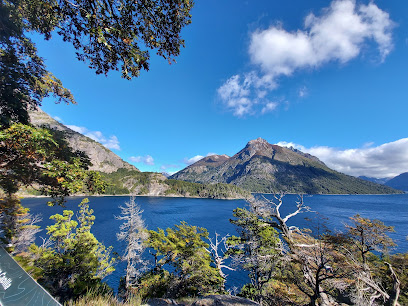
Galeria del sol bariloche
Experience the vibrant shopping and culinary delights at Galeria del Sol, the heart of San Carlos de Bariloche, Argentina.

Cerro Llao Llao
Explore the breathtaking Cerro Llao Llao nature preserve, offering stunning views, diverse wildlife, and unforgettable hiking experiences in Bariloche, Argentina.

Bariloche
Explore the breathtaking landscapes and rich culture of Bariloche, Argentina, a stunning Patagonian destination for all adventurers.

Mirador Lago Gutierrez
Discover the stunning landscapes and panoramic views at Mirador Lago Gutierrez, a must-visit observation deck in San Carlos de Bariloche, Argentina.

Unmissable attractions to see
Parque Nacional Nahuel Huapi
Explore the breathtaking landscapes and rich biodiversity of Parque Nacional Nahuel Huapi, a top destination for nature enthusiasts in Argentina.

Puerto Pañuelo
Explore Puerto Pañuelo, the stunning marina in Bariloche that connects you to Patagonia's natural wonders and outdoor adventures.

Catedral Alta Patagonia
Experience the thrill of skiing and the breathtaking views at Catedral Alta Patagonia, a premier ski resort in the heart of Bariloche, Argentina.

Parque Nacional Los Arrayanes
Discover the breathtaking Parque Nacional Los Arrayanes, a national park in Argentina known for its stunning Arrayán trees and scenic landscapes.

Punto Panorámico - Circuito Chico
Experience the awe-inspiring vistas at Punto Panorámico, an unmissable observation deck along the scenic Circuito Chico in San Carlos de Bariloche.
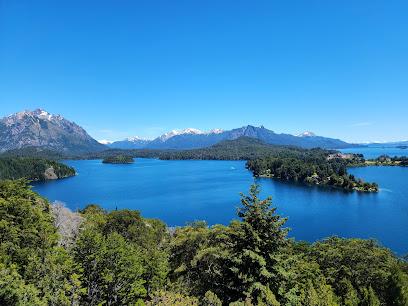
Cathedral Our Lady of Nahuel Huapi
Discover the architectural beauty and spiritual serenity of the Cathedral of Our Lady of Nahuel Huapi, an iconic landmark in San Carlos de Bariloche.

Museo del Chocolate Havanna
Experience the sweet allure of chocolate at Museo del Chocolate Havanna in Bariloche, Argentina—where history and taste come together.

Puerto Anchorena, Isla Victoria
Explore the breathtaking beauty of Puerto Anchorena, Isla Victoria, a serene paradise in Neuquén Province, perfect for nature lovers and adventure seekers.

Ventisquero Negro
Explore Ventisquero Negro, a stunning glacial paradise near San Carlos de Bariloche, perfect for hiking and capturing breathtaking natural beauty.

Parque Nahuelito
Discover the enchanting Parque Nahuelito in Bariloche, where dinosaurs come to life amidst breathtaking Andean landscapes.

Aerosilla Cerro Campanario
Explore the stunning views of the Andes at Aerosilla Cerro Campanario, the premier mountain cable car experience in San Carlos de Bariloche, Argentina.

Muelle Lago Escondido
Explore the serene beauty of Muelle Lago Escondido, a hidden gem in Río Negro Province, perfect for nature lovers and those seeking tranquility.
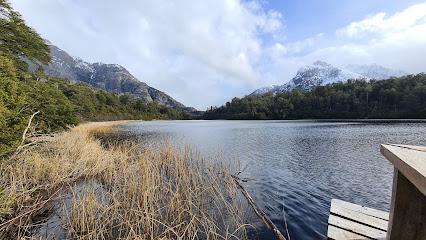
Cerro Bayo Ski Boutique
Experience the magic of Patagonia at Cerro Bayo Ski Boutique, where breathtaking views and thrilling winter sports await in Villa La Angostura.
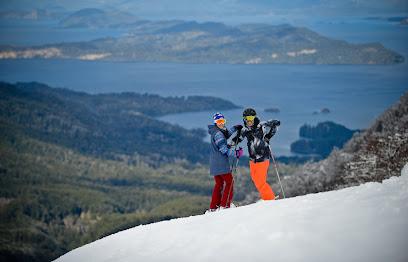
Base del Cerro Catedral
Explore the adventure-filled Base del Cerro Catedral in Patagonia, where thrilling ski slopes and breathtaking hiking trails await every visitor.
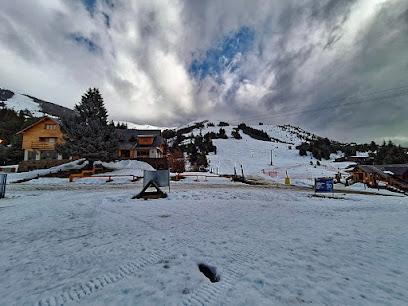
Playa Del Toro
Experience the unspoiled beauty of Playa Del Toro, a hidden gem in Parque Nacional Nahuel Huapi, perfect for relaxation and outdoor adventure.

Essential places to dine
La Fonda del Tío
Experience authentic Argentine cuisine at La Fonda del Tío in Bariloche – where tradition meets flavor amidst stunning mountain views.

Kunstmann
Experience exceptional craft beers at Kunstmann brewpub in San Carlos de Bariloche amidst stunning Patagonian scenery.

Familia Weiss
Experience exquisite Argentine cuisine at Familia Weiss, where local flavors meet culinary excellence in scenic Bariloche.
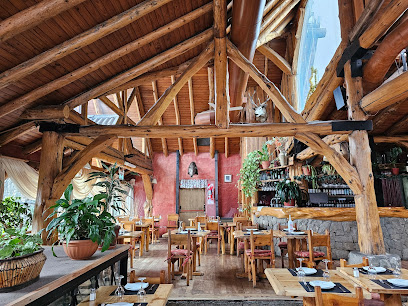
Friends
Discover Friends in Bariloche - where delicious grilled dishes meet traditional pizza in a warm, inviting atmosphere.
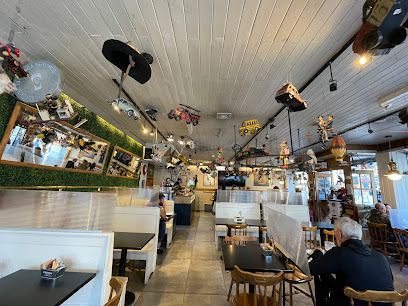
Trattoria L' Italiano
Experience authentic Italian flavors amidst the breathtaking beauty of San Carlos de Bariloche at Trattoria L' Italiano.

Mexicano Café
Experience authentic Mexican cuisine at Mexicano Café in San Carlos de Bariloche - where every dish tells a story.

El Boliche de Alberto Pastas
Experience authentic Argentine cuisine at El Boliche de Alberto Pastas in San Carlos de Bariloche – where every dish tells a story.

Breogan
Savor authentic Spanish cuisine in San Carlos de Bariloche at Breogan - where tradition meets taste.

La Alpina Restaurante
Experience authentic Argentine flavors at La Alpina Restaurante, where delicious cuisine meets stunning mountain views in Bariloche.

La Marmite
Experience exquisite Argentine cuisine at La Marmite in San Carlos de Bariloche – where every meal tells a delicious story.

El Patacón
Discover authentic Argentinian cuisine at El Patacón in scenic San Carlos de Bariloche – where every meal is a celebration of flavor.

Rincón Patagónico
Experience the essence of Argentinian cuisine at Rincón Patagónico while enjoying breathtaking views in San Carlos de Bariloche.

Alto El Fuego - Centro
Experience authentic Argentinian cuisine at Alto El Fuego - Centro in San Carlos de Bariloche, where expertly grilled steaks meet stunning scenery.

Chimi Bar de Choris
Experience the vibrant flavors of Argentina at Chimi Bar de Choris, where craft beer meets delicious comfort food in San Carlos de Bariloche.

Chimi Deli Cocina Natural
Experience authentic Argentine flavors at Chimi Deli Cocina Natural in Bariloche - where local ingredients meet culinary passion.

Markets, malls and hidden boutiques
Shopping Patagonia
Discover the ultimate shopping experience in Bariloche at Shopping Patagonia, where retail, dining, and entertainment come together.

Galeria del sol bariloche
Discover high-end shops and unique souvenirs at Galeria del Sol, the premier shopping destination in Bariloche, perfect for every traveler.

Handicrafts The Coihue
Explore the charm of Handicrafts The Coihue in Bariloche, where unique artisan goods and local culture come together in a delightful shopping experience.

Colectivo de Diseño
Discover the essence of Bariloche's artistry at Colectivo de Diseño, where local crafts meet unique souvenirs in a vibrant shopping experience.

Montagne
Discover Montagne in San Carlos de Bariloche for top-quality outdoor clothing and camping gear to enhance your adventure in Argentina's stunning landscapes.

Scandinavian
Discover top-notch outdoor apparel at Scandinavian in Bariloche, where style meets functionality for every adventure.

Pampa Linda Bags & Accesories
Explore the vibrant world of fashion at Pampa Linda Bags & Accessories, where local craftsmanship meets stylish design in San Carlos de Bariloche.

SUMMIT = Patagonia & Rab & Timberland & Burton & Volcom & Rip Curl & Oneill & Trown & Opiparo & Lado B
Shop top outdoor brands like Patagonia, Burton, and Volcom at SUMMIT in San Carlos de Bariloche for your next adventure!

Bendito capricho
Explore Bendito Capricho in San Carlos de Bariloche for trendy clothing and unique local fashion that captures the essence of the region.

Paseo de la Catedral
Discover the heart of Bariloche shopping at Paseo de la Catedral, a vibrant mall filled with local treasures and culinary delights.

El Bosque
Discover unique local crafts and souvenirs at El Bosque, the charming gift shop in San Carlos de Bariloche, perfect for every traveler.
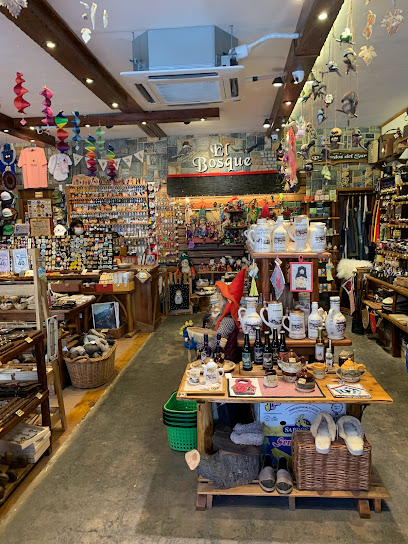
Isadora
Discover Isadora in San Carlos de Bariloche, a premier destination for fashion accessories, beauty products, and unique jewelry that captures the spirit of Argentina.

Cheeky
Discover trendy clothing and unique fashion finds at Cheeky, a stylish boutique in the heart of Bariloche, Argentina.
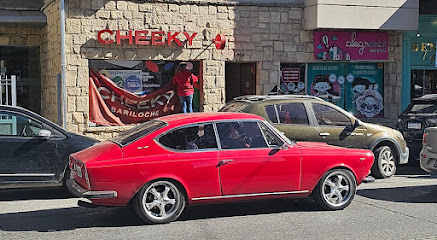
Free Shop MDV
Explore Free Shop MDV in San Carlos de Bariloche: The ultimate destination for artisan chocolates, hunting gear, and local craftsmanship.

Fukuoka Regalos
Discover Fukuoka Regalos in San Carlos de Bariloche, a charming gift shop filled with unique Argentine treasures and local handicrafts.

Essential bars & hidden hideouts
Wesley Brewery
Discover the flavors of Patagonia at Wesley Brewery, where handcrafted beers and delicious food meet in an inviting atmosphere.

Konna Bar
Discover the vibrant atmosphere of Konna Bar, a brewpub in San Carlos de Bariloche with local craft beers and delicious pub food.
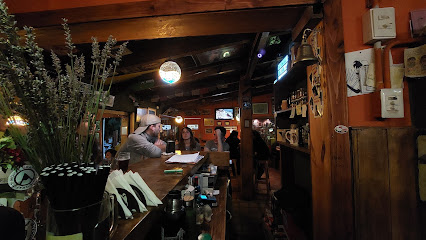
Stradibar
Discover Stradibar, a cozy brewpub in Bariloche offering craft beers and delicious gastropub dishes in a charming atmosphere.

La Juana Bar Bariloche
Discover the lively ambiance and delightful drinks at La Juana Bar, a must-visit spot in Bariloche for an unforgettable night out.

Kosten Beer Bar
Discover Kosten Beer Bar in Bariloche: a brewpub offering a unique selection of craft beers and delicious food in a vibrant setting.

Modo Bar
Discover Modo Bar: A lively gastropub in Bariloche offering delicious food, an extensive drink menu, and thrilling live music for an unforgettable night out.
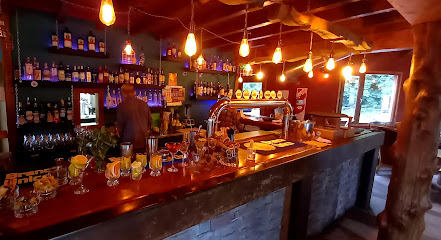
KUTRAL
Experience the vibrant nightlife of Bariloche at KUTRAL, where local flavors meet a lively atmosphere in the heart of Patagonia.

Luna Bar
Discover the lively Luna Bar in San Carlos de Bariloche, where exquisite cocktails meet delicious dining in a vibrant atmosphere.

After7
Experience the vibrant nightlife at After7, a premier gastropub in Bariloche offering delicious food, craft cocktails, and an inviting atmosphere.

Santino Bar
Experience the vibrant nightlife of San Carlos de Bariloche at Santino Bar, where great drinks and a lively atmosphere await you.

Duham, beer & cocktails bar
Discover the vibrant brewpub culture at Duham, where craft beers and cocktails blend seamlessly in the heart of Bariloche.

South Bar
Discover the lively South Bar in San Carlos de Bariloche, where vibrant nightlife meets Argentine hospitality amidst stunning mountain views.

Berkana Bar de Lago
Discover Berkana Bar de Lago, a vibrant gastropub in San Carlos de Bariloche, known for its innovative cuisine and stunning lakeside views.

SOWA Bar Cerveceria
Discover the lively atmosphere of SOWA Bar Cerveceria, where craft beers and a vibrant nightlife await you in the heart of San Carlos de Bariloche.

Reconquista Bar Gintoneria y Tapas
Experience the vibrant ambiance and exceptional tapas at Reconquista Bar Gintoneria y Tapas in San Carlos de Bariloche, where every sip and bite tells a story.

Local Phrases
-
- HelloHola
[oh-lah] - GoodbyeAdiós
[ah-dee-ohs] - YesSí
[see] - NoNo
[noh] - Please/You're welcomePor favor/De nada
[por fah-bor/deh nah-dah] - Thank youGracias
[grah-see-ahs] - Excuse me/SorryPerdón
[pehr-dohn] - How are you?¿Cómo estás?
[koh-moh ehs-tahs] - Fine. And you?Bien. ¿Y tú?
[bee-ehn. ee too] - Do you speak English?¿Hablas inglés?
[ah-blahs een-glehs] - I don't understandNo entiendo
[noh ehn-tee-ehn-doh]
- HelloHola
-
- I'd like to see the menu, pleaseMe gustaría ver el menú, por favor
[meh goos-tah-ree-ah behr ehl meh-noo, por fah-bor] - I don't eat meatNo como carne
[noh koh-moh kahr-neh] - Cheers!¡Salud!
[sah-lood] - I would like to pay, pleaseMe gustaría pagar, por favor
[meh goos-tah-ree-ah pah-gahr, por fah-bor]
- I'd like to see the menu, pleaseMe gustaría ver el menú, por favor
-
- Help!¡Ayuda!
[ah-yoo-dah] - Go away!¡Vete!
[veh-teh] - Call the Police!¡Llama a la Policía!
[yah-mah ah lah poh-lee-see-ah] - Call a doctor!¡Llama a un doctor!
[yah-mah ah oon dohk-tohr] - I'm lostEstoy perdido
[ehs-toy pehr-dee-doh] - I'm illEstoy enfermo
[ehs-toy ehn-fehr-moh]
- Help!¡Ayuda!
-
- I'd like to buy...Me gustaría comprar...
[meh goos-tah-ree-ah kohm-prahr] - I'm just lookingSolo estoy mirando
[soh-loh ehs-toy mee-rahn-doh] - How much is it?¿Cuánto cuesta?
[kwan-toh kwehs-tah] - That's too expensiveEsto es muy caro
[ehs-toh ehs moo-ee kahr-oh] - Can you lower the price?¿Puedes bajar el precio?
[pweh-dehs bah-hahr ehl pree-syoh]
- I'd like to buy...Me gustaría comprar...
-
- What time is it?¿Qué hora es?
[keh oh-rah ehs] - It's one o'clockEs la una
[ehs lah oo-nah] - Half past (10)Las diez y media
[lahs dyehs ee meh-dee-ah] - MorningMañana
[mah-nyah-nah] - AfternoonTarde
[tahr-deh] - EveningNoche
[noh-cheh] - YesterdayAyer
[ah-yehr] - TodayHoy
[oy] - TomorrowMañana
[mah-nyah-nah] - 1Uno
[oo-noh] - 2Dos
[dohs] - 3Tres
[trehs] - 4Cuatro
[kwah-troh] - 5Cinco
[seen-koh] - 6Seis
[says] - 7Siete
[syeh-teh] - 8Ocho
[oh-choh] - 9Nueve
[nweh-veh] - 10Diez
[dyehs]
- What time is it?¿Qué hora es?
-
- Where's a/the...?¿Dónde está el/la...?
[dohn-deh ehs-tah ehl/lah] - What's the address?¿Cuál es la dirección?
[kwal ehs lah dee-rehk-syohn] - Can you show me (on the map)?¿Puedes mostrarme (en el mapa)?
[pweh-dehs mohs-trahr-meh (ehn ehl mah-pah)] - When's the next (bus)?¿Cuándo es el próximo (colectivo)?
[kwan-doh ehs ehl prohk-see-moh (koh-lehk-tee-voh)] - A ticket (to ....)Un boleto (a ...)
[oon boh-leh-toh (ah ...)]
- Where's a/the...?¿Dónde está el/la...?
History of San Carlos de Bariloche
-
San Carlos de Bariloche was officially founded on May 3, 1902. The town was named after Carlos Wiederhold, a German-Chilean settler who established a successful trading post in the area. The name 'Bariloche' comes from the Mapudungun word 'Vuriloche,' meaning 'people from behind the mountain.'
-
In 1934, the arrival of the railway marked a turning point in the development of Bariloche. The railway connected Bariloche to the rest of Argentina, facilitating the transport of goods and people. This development significantly boosted tourism and commerce in the region.
-
Nahuel Huapi National Park, established in 1934, is Argentina's oldest national park. It surrounds San Carlos de Bariloche and covers over 7,050 square kilometers. The park's creation was instrumental in preserving the area's natural beauty and biodiversity, making it a major attraction for nature enthusiasts.
-
In the early 20th century, Swiss and German immigrants began to settle in Bariloche, bringing with them their architectural styles, culinary traditions, and culture. This European influence is evident in the town's chalet-style buildings, chocolate shops, and breweries.
-
San Carlos de Bariloche is renowned as a premier destination for winter sports in South America. The establishment of the Cerro Catedral ski resort in 1936 played a pivotal role in this reputation. The resort attracts thousands of skiers and snowboarders from around the world every year.
-
In 1955, the Bariloche Atomic Center was inaugurated, making the town a significant player in Argentina's scientific community. The center focuses on nuclear research and technology, contributing to the country's advancements in these fields.
-
Bariloche is often referred to as the 'Chocolate Capital of Argentina.' The town's chocolate industry began to flourish in the mid-20th century, thanks to the influence of European immigrants. Today, visitors can enjoy a variety of artisanal chocolates and even participate in chocolate-making workshops.
-
The Civic Center of Bariloche, inaugurated in 1940, is a landmark of the town. Designed by architect Ernesto de Estrada, the center features a unique blend of Patagonian and European architectural styles. It houses several important institutions, including the Patagonia Museum and the Francisco P. Moreno Library.
-
Founded in 1931, the Andean Club of Bariloche (Club Andino Bariloche) played a crucial role in promoting mountaineering and outdoor activities in the region. The club organizes various events and expeditions, encouraging locals and tourists alike to explore the stunning Patagonian landscapes.
San Carlos de Bariloche Essentials
-
San Carlos de Bariloche is accessible by air, road, and even rail. The San Carlos de Bariloche Airport (BRC) is the primary gateway for most international and domestic travelers, with regular flights from Buenos Aires, Cordoba, and other major cities. By road, you can take National Route 40, which runs parallel to the Andes and offers stunning views. Long-distance buses from Buenos Aires and other cities provide a more budget-friendly option. The scenic 'Tren Patagonico' railway offers a unique travel experience from Viedma to Bariloche.
-
Once in Bariloche, the city has several transportation options. Local buses are a common and affordable way to get around, and the 'SUBE' card is required for payment. Taxis and ride-sharing services like Uber are also available. Renting a car can offer more flexibility, especially for exploring the surrounding natural parks and lakes. Cycling is a popular option in the summer months, with numerous bike rental shops throughout the city.
-
The official currency in Argentina is the Argentine Peso (ARS). Credit cards are widely accepted in hotels, restaurants, and larger shops, but it's advisable to carry cash for smaller establishments and rural areas. ATMs are plentiful in Bariloche, but they may charge high withdrawal fees, so plan accordingly. Currency exchange services are available at the airport, banks, and some hotels.
-
Bariloche is generally a safe destination for tourists, but it's important to take standard precautions. Avoid walking alone at night in unfamiliar areas and keep an eye on your belongings in crowded places. High-crime areas specifically targeting tourists are rare, but neighborhoods like 'El Mallín' should be navigated with caution, especially after dark. Always use reputable transportation services and stay aware of your surroundings.
-
In case of emergency, dial 911 for immediate assistance. The local police station and medical facilities, including the Hospital Zonal Ramón Carrillo, are available to help. It is highly recommended to have travel insurance that covers medical emergencies. Pharmacies in the city can provide over-the-counter medications for minor health issues.
-
Fashion: Do dress in layers, as weather can be unpredictable. Avoid overly casual attire in upscale restaurants. Religion: Do respect local customs, especially when visiting churches. Public Transport: Do stand up for elderly passengers and don’t eat on buses. Greetings: Do greet with a handshake or a kiss on the cheek, as is customary. Eating & Drinking: Do try local specialties like Patagonian lamb and chocolates. Don’t rush meals; dining is a social activity here.
-
To experience Bariloche like a local, visit the Feria Artesanal market for handcrafted goods and local foods. Engage with locals, who are often friendly and eager to share tips. Don't miss out on trying the local craft beers; Bariloche is known as the 'Beer Capital of Argentina.' For a unique experience, take a boat tour on Lake Nahuel Huapi or hike one of the many trails in the Nahuel Huapi National Park.
Trending Landmark in San Carlos de Bariloche
-
Parque Nacional Nahuel Huapi
-
Confitería del Cerro Campanario
-
Puerto Pañuelo
-
Punto Panorámico - Circuito Chico
-
Llao Llao Hotel
-
Centro Cívico Bariloche
-
Cathedral Our Lady of Nahuel Huapi
-
Museo del Chocolate Havanna
-
Puerto Anchorena, Isla Victoria
-
Ventisquero Negro
-
Parque Nahuelito
-
Galeria del sol bariloche
-
Cerro Llao Llao
-
Bariloche
-
Mirador Lago Gutierrez
Nearby Cities to San Carlos de Bariloche
-
Things To Do in San Carlos de Bariloche
-
Things To Do in Puerto Varas
-
Things To Do in Osorno
-
Things To Do in Pucon
-
Things To Do in Valdivia
-
Things To Do in Temuco
-
Things To Do in Concepción
-
Things To Do in Curicó
-
Things To Do in San Rafael
-
Things To Do in Rancagua
-
Things To Do in Santiago
-
Things To Do in Valparaíso
-
Things To Do in Viña del Mar
-
Things To Do in Mendoza
-
Things To Do in El Calafate

















